Article written by Elisa - Travel Writer & Local in France
This article may contain compensated links. Please read disclaimer for more info.
Most Popular Drinks in France
Like their food, art, history, and language, the French are passionate about their drinks. Of course, there’s the French wine, with 11.2 billion glasses enjoyed each year, but France has other famous French drinks that you should try.
Some French beverages are popular all over the country, while other French drinks are mainly found in a specific region of France.
We asked some travel bloggers and friends about their favorite French alcoholic drinks. Find out about some of the most popular drinks in France, a wide choice of French dessert drinks, apéritifs, and French cocktails. From pastis in Marseille to cognac in Charente, we have you covered!
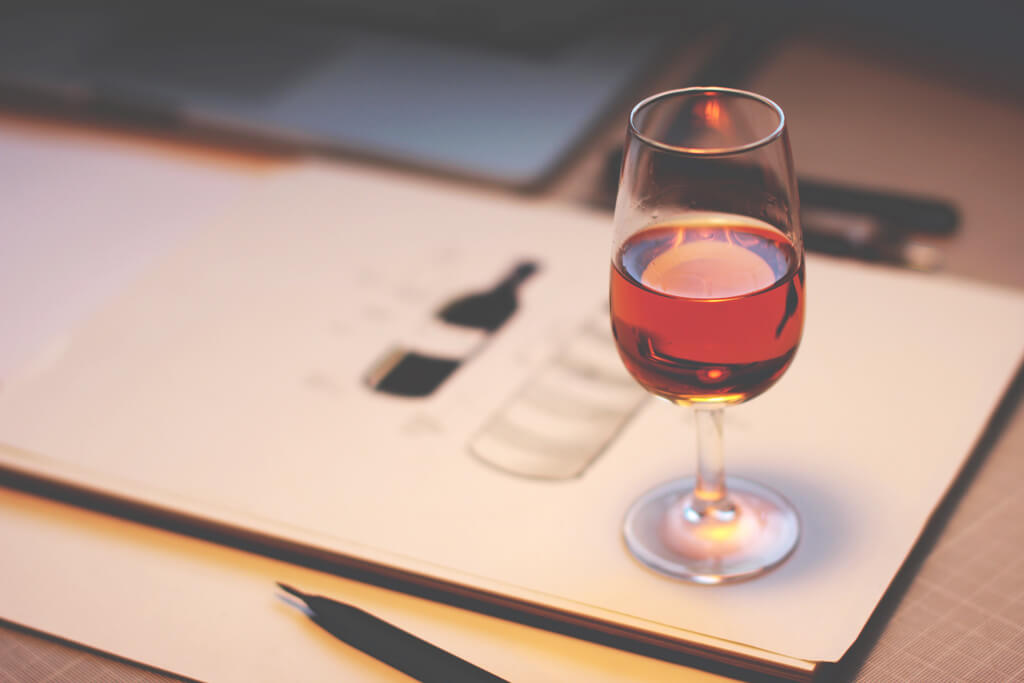
The AOC Appellation d’Origine Contrôlée classification system used for French drinks and other products was introduced in France in 1935 to guarantee that a particular product adheres to the standards set regarding the place of growth, method of production, and other criteria specific to the produce. It translates as ‘Controlled Designation of Origin.’
This article does not cover wines. If you are interested in French wines, check out our article on the best wine regions in France. We also have a wine travel category with wine-related trip ideas.
Popular French Drinks – Apéritifs
Apéritifs are pre-dinner drinks, and they are a kind of cultural institution in Paris and France. When consumed alongside a snack, it becomes the famous French Apéritif.
In France, it is very popular to meet for an apéritif or “apéro.” During the week, we usually have apéros with our co-workers right after work. After-work apéros are a good way to continue a business conversation in a more laid-back atmosphere, but they are also great team builders.
On weekends, apértifs are a good excuse to meet friends and family, and they are usually followed by dinner somewhere else.
The most famous apéritifs drinks in France are kir (white wine with crème de cassis) which becomes a kir royale if we replace the white wine with champagne; rosé wine (in summertime), pastis, Lillet, and champagne (found in many cocktails).
Kir
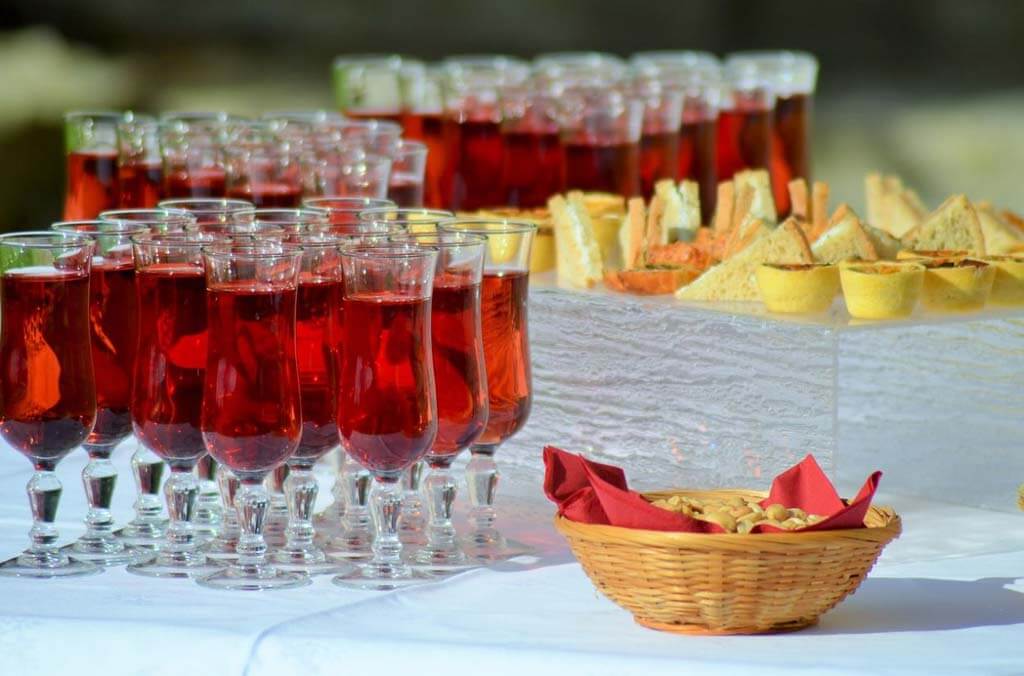
Kir is an apéritif traditional to Burgundy cuisine. It is made with crème de cassis, and Burgundy white wine ‘aligoté’. Its name comes from the French Politician Félix Kir, who was mayor of Dijon from 1945 to 1968).
One of the most famous French cocktails, a kir is very easy to prepare: 1/ 5 Dijon crème de cassis at 20 °C, lengthened by 4 /5 of Burgundy wine aligoté. The Burgundy wine can be replaced by another dry white wine without significantly degrading the taste.
Like many popular French cocktails, there are many variants around the kir, being the kir royal the most popular. The kir royal has champagne instead of white wine.
Ti-Punch
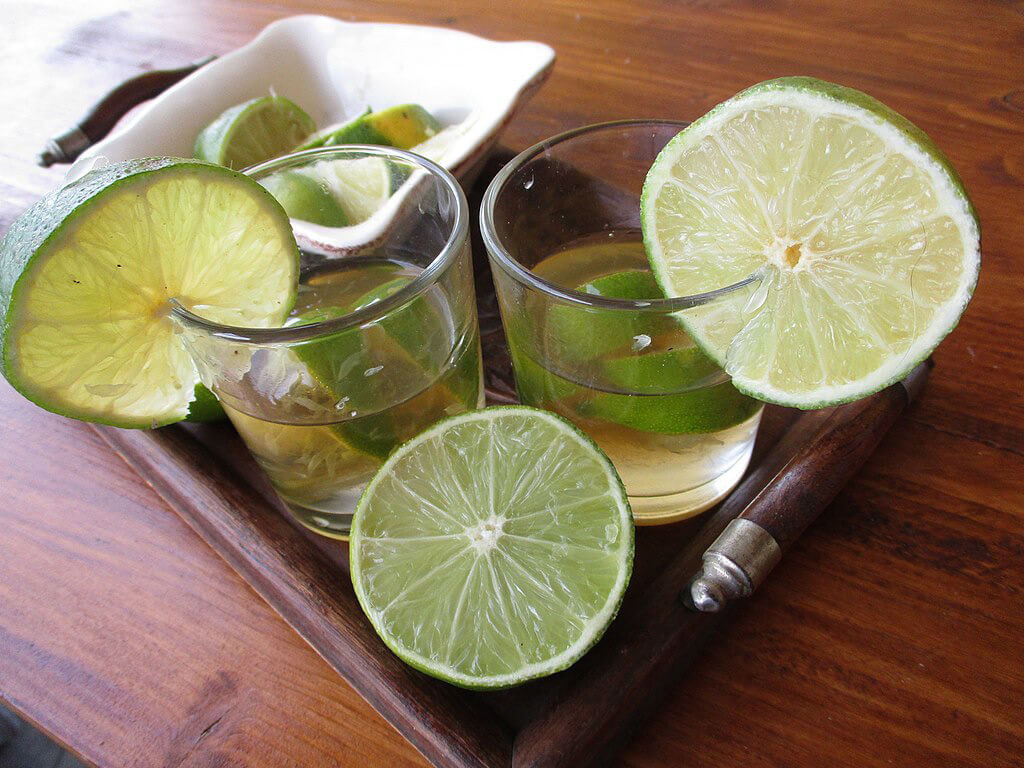
Ti punch is a rum-based cocktail from the French Caribbean islands of Martinique and Guadeloupe. This French drink literally means ‘small punch’ and is often compared to Cuba’s Daiquiri or Brazil’s Caipirinha.
However, the ti punch is made with a special type of rum, Rhum Agricole. Rhum Agricole is a specific type of rum distilled from sugar cane juice rather than molasses. Sugar cane juice rums from Martinique are labeled AOC (Appellation d’Origine-Controlée) Martinique Rhum Agricole – which is unique to Martinique. The most famous of Martinique’s distilleries is Habitation Clément, which has a quite fabulous paid-for tour and includes tastings of Ti Punch (and indeed all their rums) at the end.
And so, onto Ti Punch. The cocktail, which is usually served as an aperitif, is made with Rhum Agricole, lime, and cane syrup. The REAL Ti Punch is served without ice, and tradition in Martinique has it prepared ‘chacun prepare sa propre mort’ – which translates as each prepares their own death – where the barman provides all the ingredients and the customer prepares it to their own taste. Proposed by Sarah | ASocialNomad
Pastis
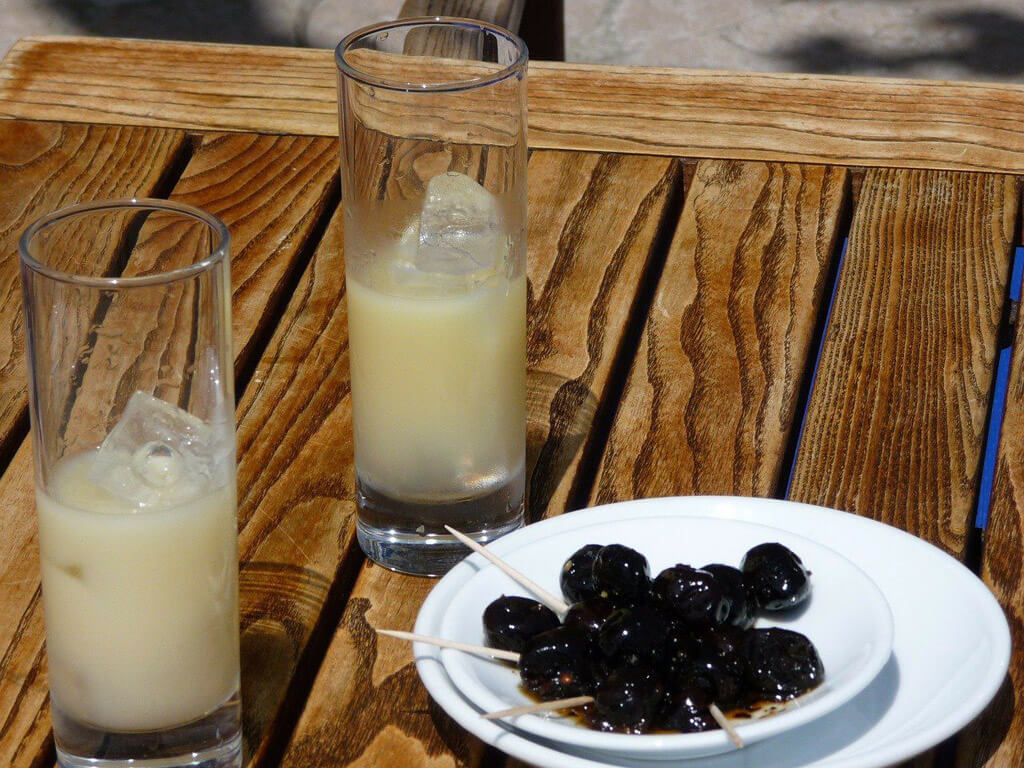
Sometimes referred to as the “sunshine of Provence,” pastis is most popular in this southeastern region of France and especially in the city of Marseille. Paul Ricard was the first to produce pastis commercially in 1932, and his Ricard brand remains the most popular brand of pastis by far.
Pastis is a liquor made of a blend of herbs and spices, the most prominent of which are star anise and licorice root. This distinctive flavor will be familiar to you if you’ve ever drunk sambuca in Italy, ouzo in Greece, or raki in Turkey.
One of the most famous drinks in France, Pastis is typically drunk as an apértif to whet the appetite before a meal. It’s served on the rocks and diluted with water. For every one part pastis, you should add five parts of water. In fact, the name comes from the Provençal word “pastís,” which means “mash-up.”
The Pastis starts out as a clear liquid, but it quickly turns an opaque, murky yellow as soon as it mixes with the water. While some spirits are filtered through isinglass, gelatin, or other animal products, vegetarian and vegan visitors to France will be happy to know that the famous Ricard brand does not use any animal-based filters. Proposed by Wendy | Nomadic Vegan
Lillet
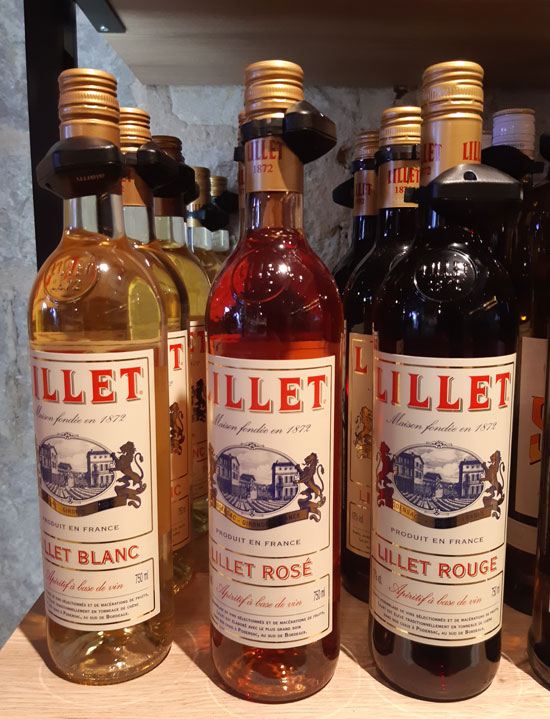
The Lillet apéritif is a vermouth, i.e. a wine-based apéritif. The wine grapes are always the same: Sémillon for Lillet Blanc, Sauvignon for Lillet Rosé, and Merlot and Cabernet for Lillet Rouge. The grape varieties are combined with natural fruit liqueurs naturally obtained by maceration of fruits for several months in alcohol.
Finally, it is for a period of 8 to 12 months that the Lillet rests in oak barrels in order to refine its flavors. During this aging time, the same attention as that given to the great wines of Bordeaux is applied.
Lillet has its origins in Podensac (a village in the south of Bordeaux) in 1887, when Paul and Raymond Lillet, two brothers and merchants of fine wines and liqueurs, created this apéritif. In 1901 it was launched in Paris.
From the 1930s, Lillet’s fame exploded in France. Following the Second World War, the Lillet was exported to the United States because American soldiers slipped it into their luggage. Across the Atlantic, this French drink very quickly became New York’s top-of-the-range and trendy “drink,” and it is still one of the most popular drinks from France.
During the 1950s, the Lillet found the favor of the Duchess of Windsor, who imposed this French apéritif in all the Parisian palaces, from the Ritz to the Georges V.
In 2008, the Ricard company, which had been distributing the brand for two years, acquired the Lillet company.
Lillet can be enjoyed simply chilled, alone, or on a bed of ice cubes. The Lillet can also be enjoyed in many cocktails.
Ratafia
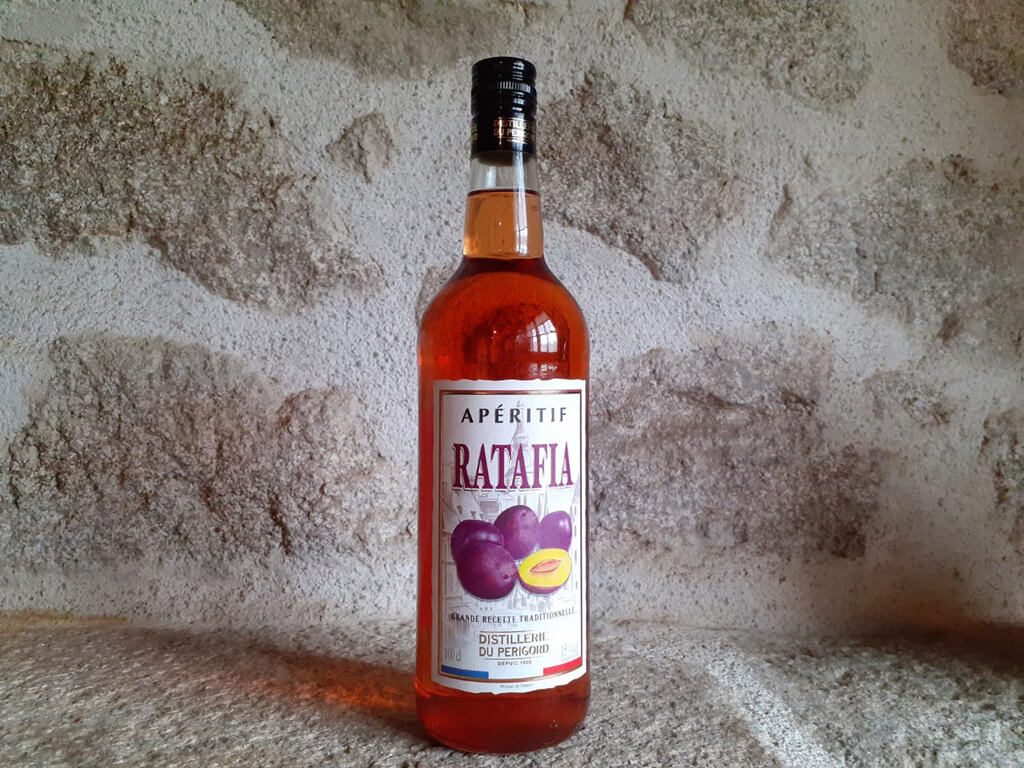
If you are looking for authentic and traditional French drinks, Ratafia is for you! You may already know its Spanish equivalent, but French Ratafia is a bit different. In France, Ratafia is not a liquor but a fortified wine. It’s made with a mixture of marc and unfermented grape juice.
This sweet wine is generally consumed as an apéritif with friends. Just picture it! You have a house in the French countryside, and your neighbors are coming over at about noon. They just want to say hi and have a chat. That would be the perfect moment to offer a little ‘Ratafia.’
Ratafia was nicknamed “l’apéritif du vigneron,” meaning the winemaker’s aperitif. Traditionally, this French drink is made during the harvest as it’s the best moment to get fresh grape juice. Naturally, you will find it mainly in wine regions such as Champagne, Burgundy, and near Bordeaux.
The recipe is one of France’s best-kept secrets! There is no official way of making ratafia. Each household does it in a different way, and that’s what makes it so unique. In Corsica, for example, they often add berries.
Ratafia is best served chilled and is preferable without ice. For the full experience, I’d recommend tasting it with some cheese and crackers. Contributed by Pauline | Beeloved City
Absinthe
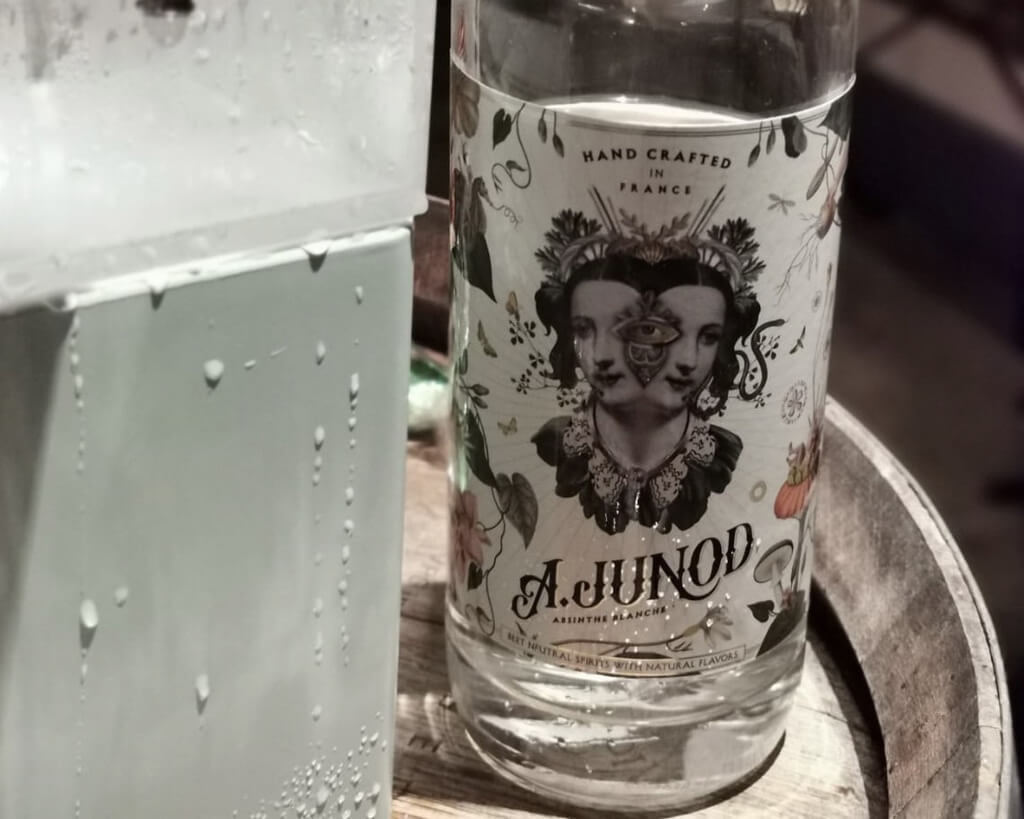
Absinthe – a spirit also known as the “Green Fairy” – is one of the French alcoholic drinks that became a European obsession in the 19th century. Although the Absinthe was originally made in Val-de-Travers in Switzerland, it was the French border town of Pontarlier in the Jura Mountains that put Absinthe on the map.
After being banned for 100 years, the production of Absinthe restarted in the 1990s, and still to this day, the town of Pontarlier is one of the best places to visit if you want to sample the drink.
In Pontarlier, there are plenty of distilleries that run tours, showing how the spirit is created drop-by-drop bypassing ice water through a sugar cube placed on a delicately chiseled flat spoon and balanced on the edge of a glass. This is also one of the best places to pick up a souvenir bottle and the brand A. Junod is a great choice if you are looking for absinthe, which is made traditionally. Proposed by Roshni | The Wanderlust Within
French 75 (Soixante-Quinze)
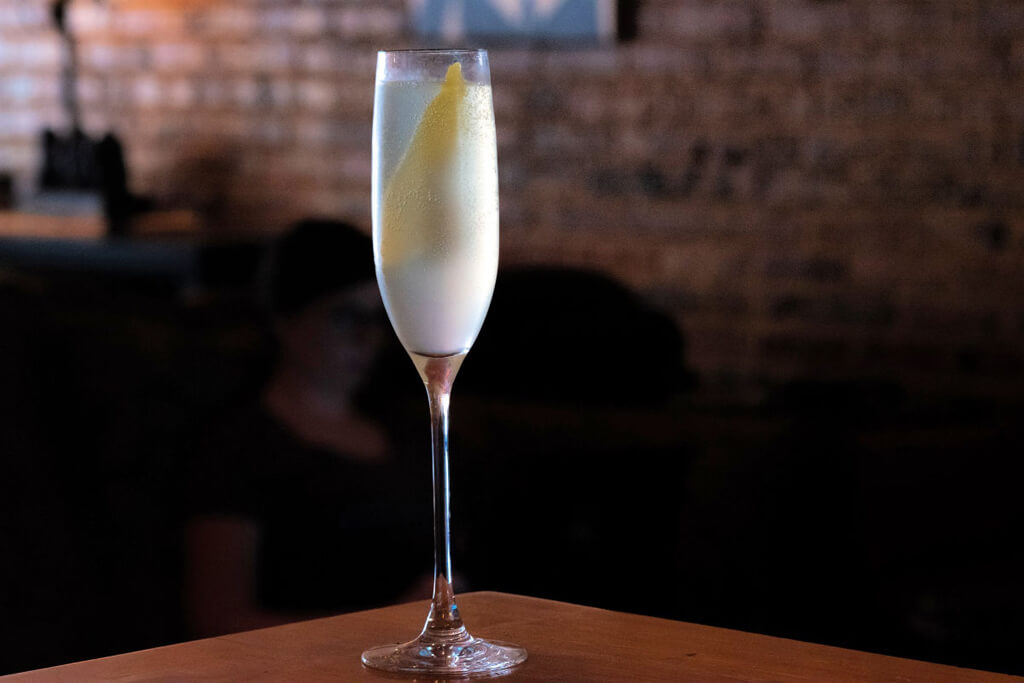
The French 75 cocktail is one of the classic French cocktails. It was created in 1915 in Paris by the barman at Harry’s New York, although it has changed quite a bit since its origin. By then, it was called Cocktail 75, and it wasn’t made with champagne.
Do you know why it has the number 75 in its name? It was a tribute to a French cannon from the First World War. Ten years later, this French drink began to be made with champagne, the cocktail was renamed, and it became known worldwide.
One of the most famous French cocktails, it’s very easy to make. You only need champagne, dry gin, fresh lemon juice, simple syrup, and ice. In France, drinks like the French 75 are very typical to have at brunches, weddings, and holidays. French 75 is of the most refreshing & easy summer cocktails you can make! Proposed by Sarah | Deliciously Happy
Dubonnet
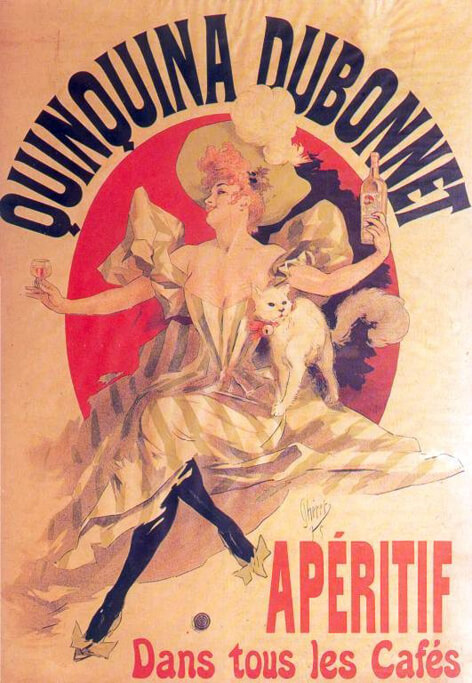
Dubonnet is a sweet, aromatized wine-based apéritif. One of the classic French drinks, Dubonnet is a blend of fortified wine (red or white), herbs, and spices (including a small amount of quinine), with fermentation being stopped by the addition of alcohol.
Joseph Dubonnet produced this quinquina wine in 1846 to fight against malaria. Quinine combats malaria, but it is very bitter, so Dubonnet developed this drug, which he masked with a decoction of herbs and spices with a strong flavor.
The soldiers of the Foreign Legion used this French beverage initially in the swamps infested with mosquitoes in North Africa.
Joseph’s wife was the first to serve the potion as an apéritif with her friends, and word of mouth ensured Dubonnet’s popularity. Dubonnet is also widely known thanks to the advertisement slogan “Dubo, Dubon, Dubonnet,” a play on words that means “It’s nice, it’s good, it’s Dubonnet.”’”
Dubonnet is commonly mixed with lemonade or bitter lemon and forms part of many French cocktails. Today, Dubonnet is considered as old-fashioned, but if you find it in a bar, you should try it!
Popular Drinks in France to Enjoy Anytime
Below there is a non-exhaustive list of popular French drinks that we can enjoy at any time. These French drinks alcoholic can be perfect for an apéritif, served with a meal, with selected dishes, or with your favorite dessert.
Champagne

A glass of champagne is a synonym for celebration. For many of us, uncorking a bottle of champagne is the way to mark good news or toast success.
Champagne is also a synonym of luxury and indulgence, with big and exclusive brands like Moët & Chandon, Veuve Clicquot, or Taittinger exporting worldwide.
The name of this national drink of France comes from the region of Champagne. Located east of Paris, vineyards stripe the region’s plains and hillsides. The area has the ideal conditions for grape growing, including chalky limestone soils, regular rainfall, a temperate climate, and moderate sunshine, helping achieve a balance of sugar and acidity.
This wine and the region’s vineyards, houses, and cellars are so iconic that they are listed as UNESCO World Heritage since 2015. Because the region of Champagne is very close to the French capital, champagne day tours from Paris are very popular and easy to organize. With more time available, this Champagne Road Trip is a good combination of sightseeing, beautiful landscapes, and (of course) champagne.
The main champagne houses are located in Reims, Champagne’s capital, and Epernay, nicknamed the capital of champagne wine. Check out the best champagne houses in Reims to visit and the best champagne houses in Epernay with good tours and tastings. Proposed by Norbert | France Bucket List
Cider
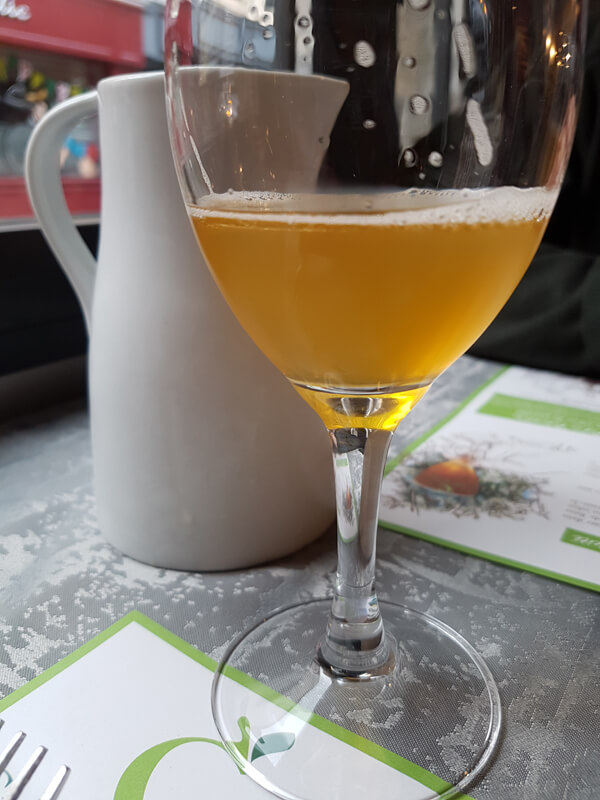
Whilst France is very well known for wine and champagne, many will be surprised to find out that Normandy is actually famous for its cider. This region in the northwest of France has the ideal colder climate to grow apples and not grapes. There are 800 different varieties of apples growing in Normandy.
A lot of the farming industry in Normandy has started to focus more and more on organic, so the cider produced by them is much better and, if I may say so, healthier. Cider is made by pressing apples and then leaving the resulting juice to ferment with a small quantity of yeast, at cold temperatures, for 3 to 6 months. The French cider is lightly carbonated with a bittersweet aroma.
Visitors in Normandy interested in the local gastronomy can follow a 25 miles long Cider Route, which has 16 official producers. One of the top things to do in Normandy, here visitors can learn about the cider-making process but also enjoy a free tasting of one of the most classic French drinks.
With so many farms around Normandy, however, there are plenty of other smaller ones that are happy to open their doors to visitors as well. Proposed by Joanna | The World in My Pocket
GOOD TO KNOW: Depending on the kind of cider, you will drink it with crêpes and galettes, desserts, seafood, white meats, or strong cheeses like Livarot.
Monbazillac Wine
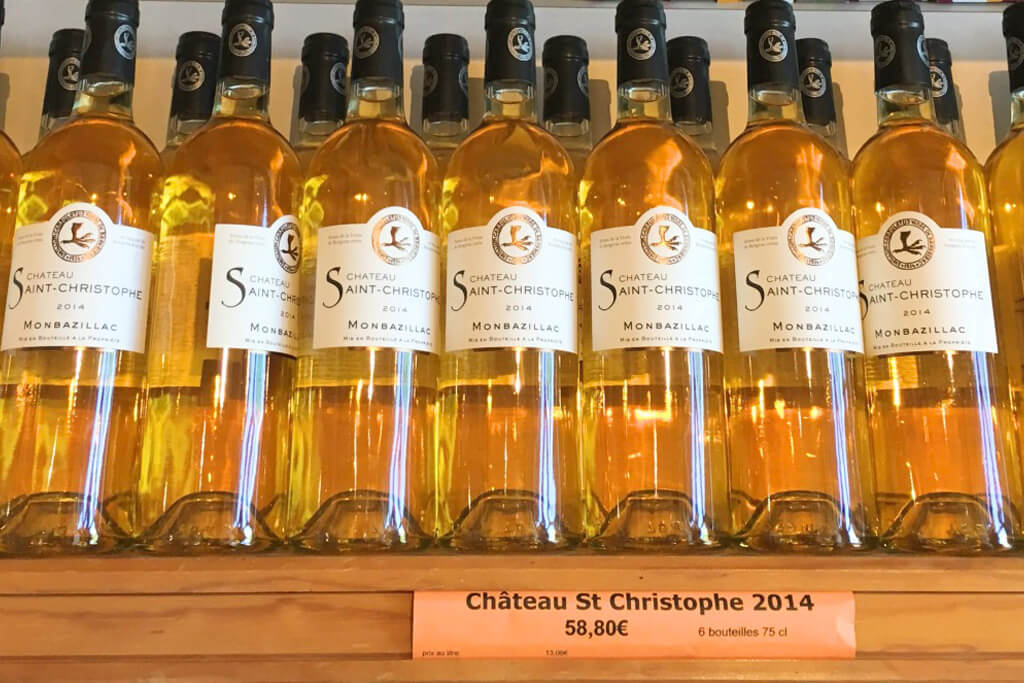
Monbazillac AOC wine is grown in the Dordogne region of southwest France, in the vineyards surrounding the southern bank of the river in the town of Bergerac.
Monbazillac is a sweet wine made from a mix of Sémillon, Sauvignon blanc, and Muscadelle grapes. The vines are subject to “noble rot,” a type of fungus that thrives in the climate of the area and gives the grapes the distinct apricot and fig-like flavor.
The grapes are all hand-picked in the vineyard, as no manual harvesting is allowed. It’s delicious when served chilled and paired with foie gras from the Périgord region. We also enjoy drinking it accompanied by dessert.
There are a variety of vineyards from the area that sell Monbazillac wine, and you can sample many of the best ones at the local Sunday Issigeac weekly market. But for an authentic experience, it’s worth visiting the beautiful Château de Monbazillac, which is the best-known cooperative vineyard of the appellation. The Château dates back to 1550, and you can explore the building and grounds as well as partake in a tasting on-site from the friendly staff. Proposed by Kylie | Visiting Dordogne
French Dessert Drinks – Digestifs
A digestif is an after-dinner drink designed to encourage digestion. The French love their brandy, and they have some of the world’s best. Try Cognac from Southwest France or Armagnac (said to be the oldest), also from the southwest.
In Normandy, you’ll find the delicious Calvados, made from apples, also known as cider brandy.
If you like liqueur (careful, not LIQUOR), then you need to try some of France’s finest. Chartreuse is originally made by Carthusian monks. Its recipe contains over 130 herbs, plants, and flowers, and from what we read, the exact recipe is a secret, and only two monks know it.
Calvados
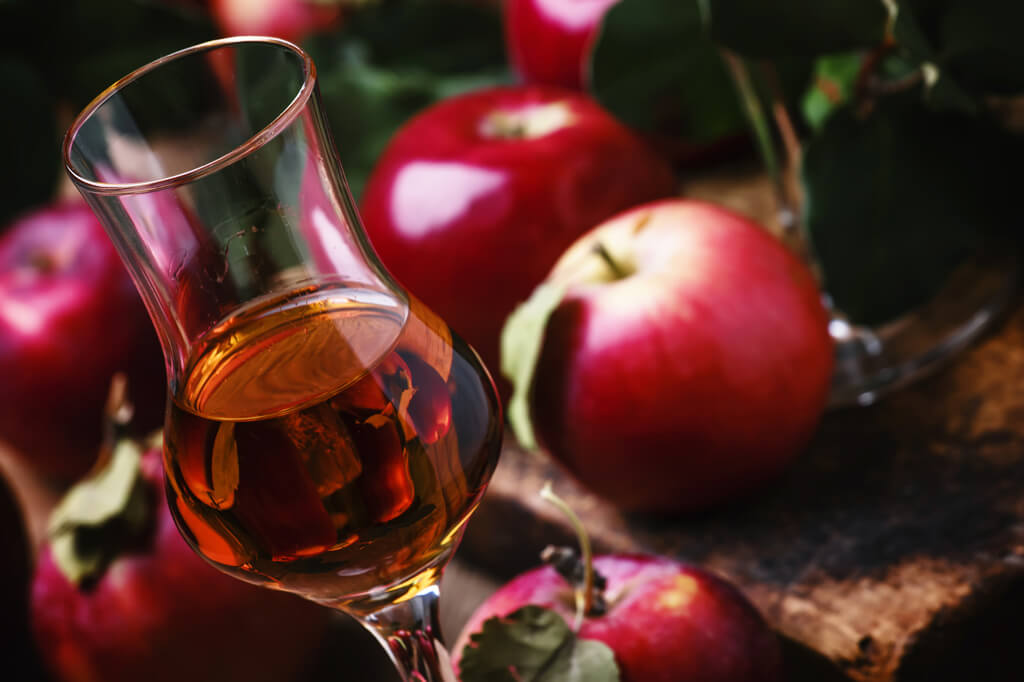
One of the classic French drinks, Calvados is made in Normandy – one of the most historical places in France. Calvados is a cider that has been distilled twice. Each time it is distilled, the alcohol percentage rises – the final product is often around 40% alcohol!
There are different types of Calvados, all produced within Normandy, and the differences are based on where the apples came from to make the cider. Different parts of Normandy produce different apples and have slightly different distilling processes. If you are interested in learning more about this French drink, these domains in Normandy offer tastings and tours & tastings in French and English.
Calvados is most commonly served in small glasses and can either be poured ‘dry’ or over ice. It can also be added to coffee, and many French drink it like this as an after-dinner digestif (to aid digestion).
Because it’s sweeter than many other French beverages, it’s often used as a dessert drink, and it goes very well with chocolate, ice cream, and, of course, crêpes! Proposed by Kat | Wandering Bird
GOOD TO KNOW: You can find Calvados also at the 2/3 of a lavish meal where it would be used as ‘trou Normand’ (Norman hole) to prevent a stack overflow in the stomach and to kick start you for the next course.
Cognac
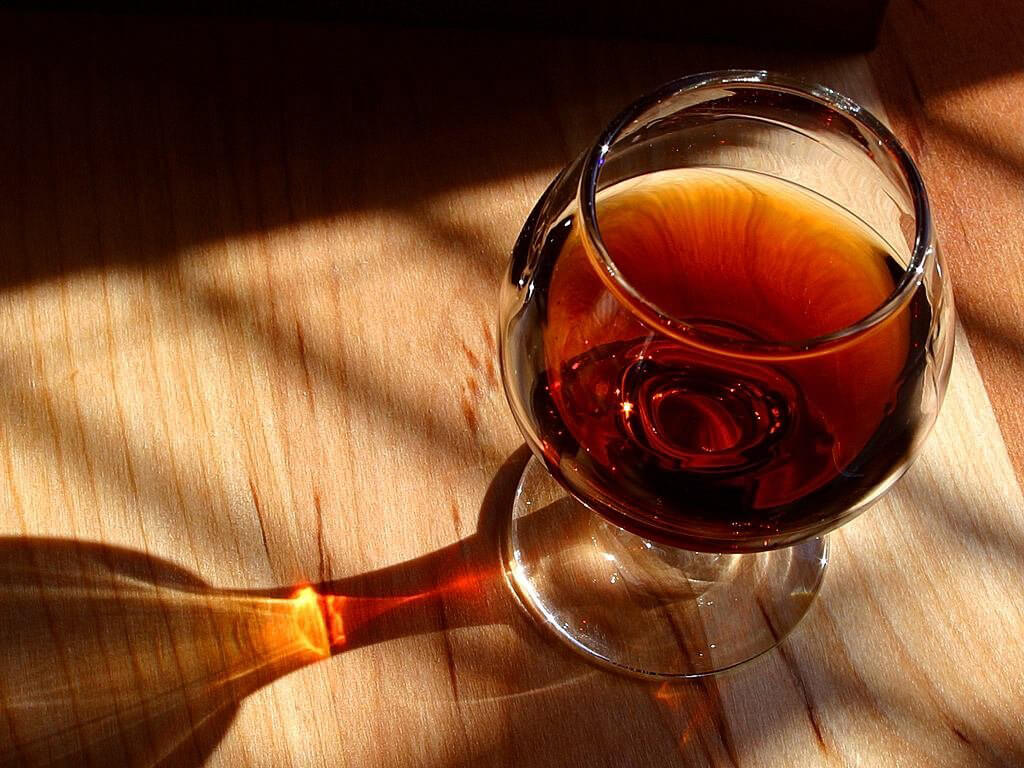
Cognac (AOC) is a variety of brandy named after the commune of Cognac in southwest France. One of the most popular drinks in France, cognac is produced in the surrounding wine-growing region, more specifically in the French departments of Charente-Maritime and Charente. If you are a cognac lover or just curious to know more about this famous French drink, there are many cognac houses offering tours & tastings.
Because of its AOC status, cognac’s production methods require it to meet certain legal requirements. Among the specified grapes, ugni blanc is the most widely used, and it must be twice distilled in copper pot stills and aged at least two years in French oak barrels from Limousin or Tronçais. Most cognacs, however, spend considerably longer “on the wood” than the minimum legal requirement.
The cognac snifter glass is suggested for a traditional tasting moment, after dinner as a digestive, where it is served neat, and you hold the glass to warm the cognac by hand.
Seasonal French Beverages
Some famous drinks in France are seasonal, specific to a season of the year or a celebration. One of the most famous France drinks of this kind is the vin chaud, which is very typical of the winter holidays and French Christmas markets.
During wintertime, some bars and cafés in Paris also propose grog, a beverage made of eau-de-vie or rum, sweetened hot water, and lemon.
Vin Chaud
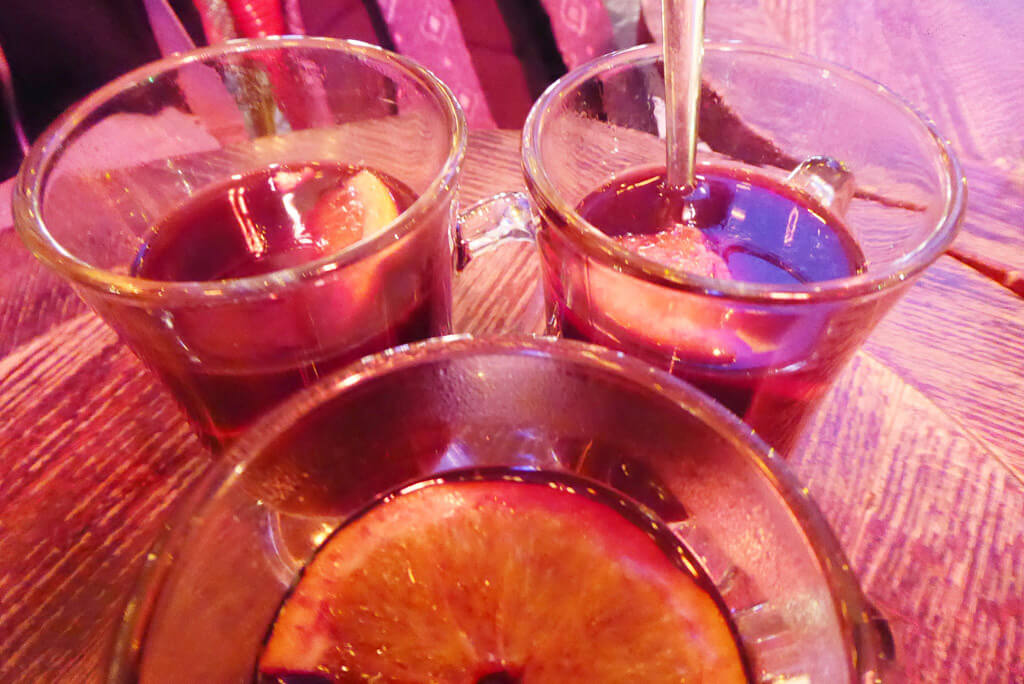
There is nothing like wandering around the Christmas Markets in the Alsace with a cup of vin chaud in hand. There are so many ways to make this French drink, each with its own little changes that make it unique. Some recipes are handed down through families over time; some just love the taste enough to try it at home, but whatever stand you get it from, you are nearly guaranteed to enjoy it.
Huge vats keep the mulled wine hot at the markets, waiting for someone to get a cup. In many of the markets, you can choose from a white or a red vin chaud. The red can be a little harsher than the white, with the white normally a little sweeter. Many are flavored with citrus and specialty-picked herbs like star anise and cinnamon. It is lovely when you get a piece of orange in the cup as well.
You will find the red variety a little more popular and more readily available. If you like the spices and need help with what are good ones to put in the wine, you will find small packets ready-made up for you to purchase in places like Carrefour to help you. Proposed by Bec | Wyld Family Travel
And there you have it, the list of famous French drinks, from classic French cocktails to French dessert drinks. Which popular drinks in France do you like most?
